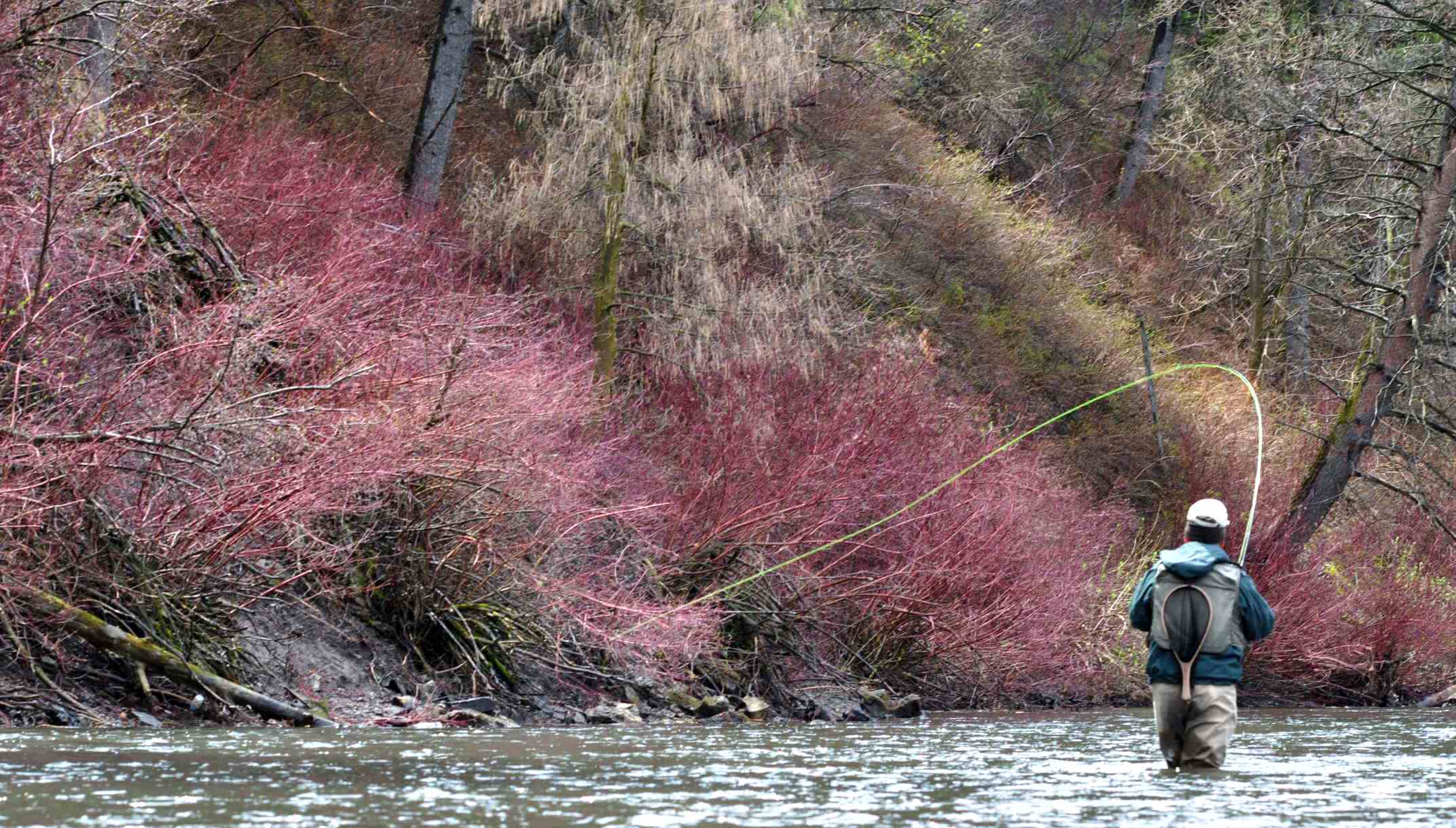BWO's 101
Posted by by Steve Schmidt on Apr 12th 2021
It’s been a fantastic start to the year, and as our fingers thaw from fishing winter’s excellent midge hatches we find spring’s highly anticipated Blue Wing Olive (BWO) mayfly hatch upon us. To help you play the game of matching hatches, which we always look forward to, and make the most of this spring emergence I’ve encapsulated some of the characteristics of BWO’s to help you get more of your time on the water.

For those just getting your feet wet in fly-fishing BWO’s are a mayfly. There are four distinct groups of mayflies important to trout: clingers, crawlers, burrowers and swimmers. As adults they look like little sailboats on the water. Scientifically these beautiful and delicate aquatic insects are are in the baetis family of swimmers; it’s a big diverse family.
As their common name suggests the adults range of shades of olive for body color, with a gray upright wing and two distinct tails. In flight the wings often have a bluish tint to them. Blue Wing Olive hatches occur in the spring and again in the fall. It’s both the first and last mayfly hatch of the year here in the west.
There are many subspecies of baetis, and the adults you see in the spring will differ from those in the fall. Generally fall baetis are smaller and darker: #20-#24. Spring BWO’s typically range from #18-#20 and are lighter in color. On any given BWO day expect to see a number of different sizes on the water. To best fish this hatch you should have a variety of sizes and patterns regardless: nymphs, dries, emergers, or all of the above. That holds true for any hatch you’re trying to have consistent success fishing.
In the spring BWO’s start hatching here in the west in late March and will continue until early May. Fall baetis will first appear in late September and be a prevalent into November. For those interested in fishing the cycle: nymphs, emergers, adults and spinners, the nymphs of this mayfly start to be active mid morning. Blue Wing nymphs are slender, and range in color from olive to dark brown. Adults typically appear late morning and on the right day will emerge well into the afternoon. The spinners, or the egg laying stage of this mayfly, can be found in the morning and again in the late afternoon. Compared to other mayflies that are important to the western flyfisher, BWO’s are somewhat unique in this behavior.
Most mayfly spinners return to the river to deposit their eggs on the river’s surface, their lifeless forms generate some of the day’s best dry fly fishing. Unlike most mayflies, Blue Wing spinners crawl under the surface of the water and deposit their eggs on submerged rocks and vegetation. Anglers often mistakenly take fish rising to drown BWO spinners for trout taking emergers, when they’re actually feeding on the dying spinners as they drift haplessly after laying their eggs just below the surface meniscus.

For those who prefer to fish when the weather is fair, and soak the sunshine, you’ll be comfortable, but you typically won’t see the best hatches or fishing that this hatch generates. These bugs hatch best on cool, overcast and wet days. Hatches will generally last longer and be more prolific on days when there is some weather overhead. Emerging adults will struggle to dry their wings and fly off when it’s cool and damp out. Since they are on the water longer they create easy opportunities for those that lay in wait. If you enjoy casting a fly to rising trout, which is the game I choose to play, on these cloudy days BWO hatches are more prolific and a river or streams larger trout will feel more comfortable feeding, but will also have a smorgasbord of options to dine on. An overcast day will also let you fish larger tippets, and have a better chance at sticking those ultra selective trout that keep eluding you.
I hope you find this helpful and you’ll have some time to fish this early season hatch. Although these mayflies are small, compared many of our other major mayfly hatches, compared to fishing size #26 midges, they’re a step in the right direction.


